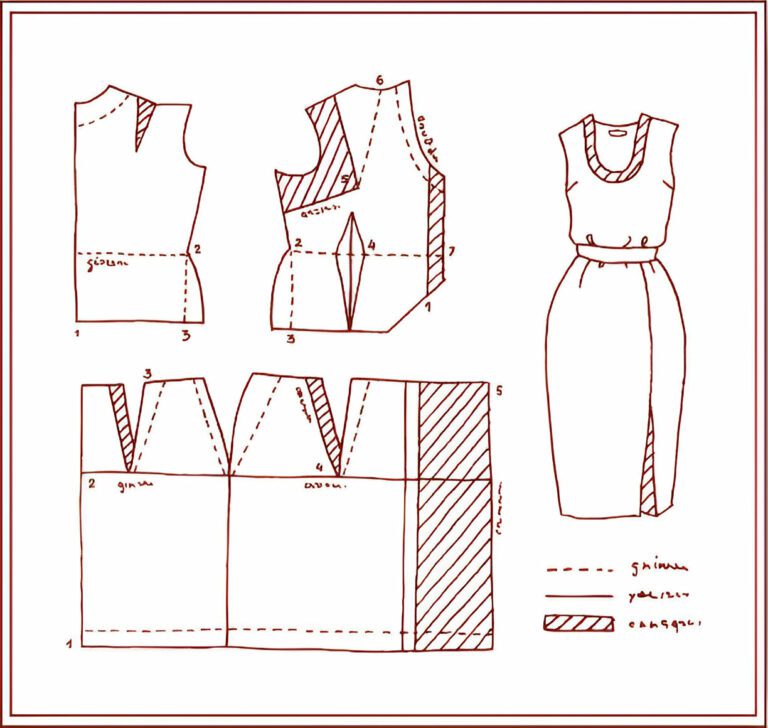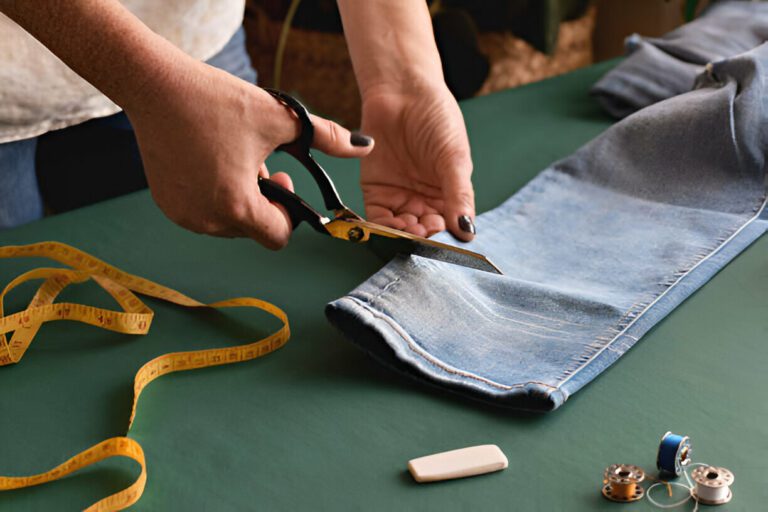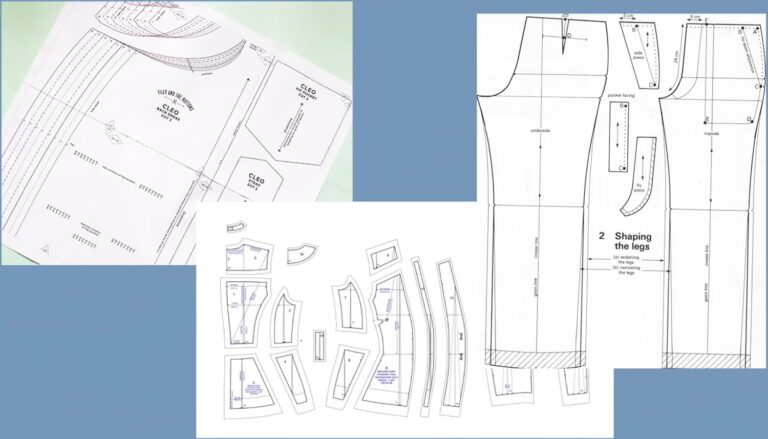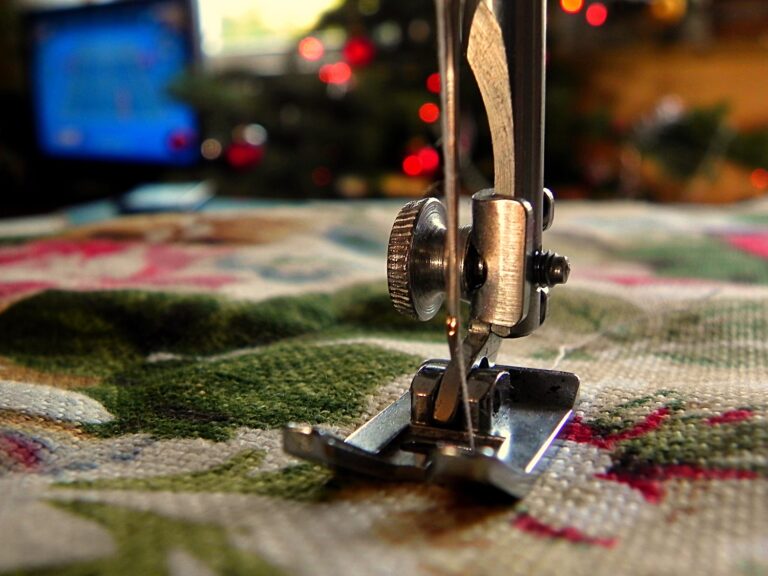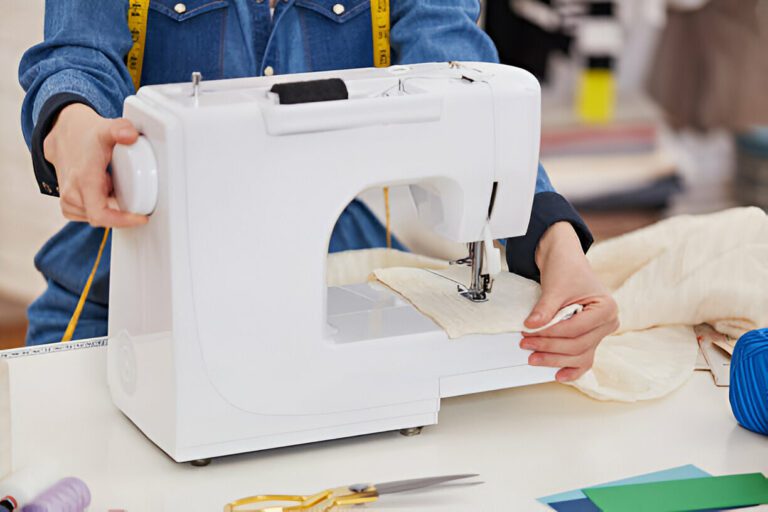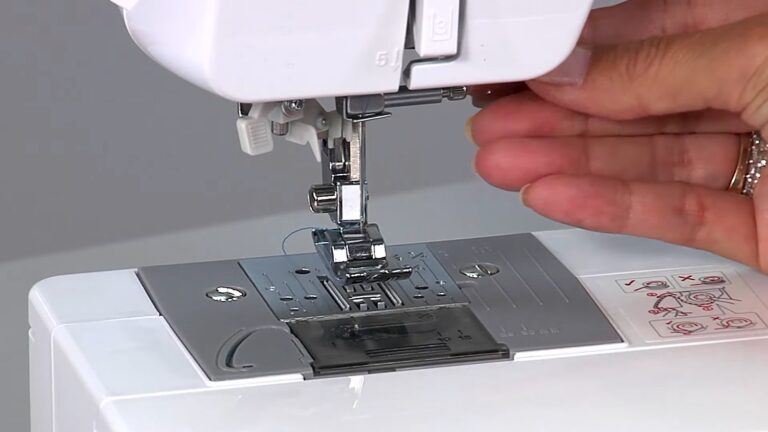What is a Serger Sewing Machine
A serger machine, also known as an overlock machine, is a specialized sewing machine that trims, sews, and finishes fabric edges in one step. It uses multiple threads and loopers to create strong, stretchable seams, giving a professional look.
The serger was introduced in the 20th century, initially for industrial use. Later it became popular among home sewers, used for sewing knits, finishing raw edges, and creating decorative stitches that enhance garment durability and appearance.
Requirements for using a serger:
The serger needs specific tools and materials like spools of thread, the thread should be lightweight and strong as heavy or weak threads may cause breakage or tension issues. Special serger needles are essential for handling the multiple threads and high-speed stitching. Since sergers trim fabric as they sew, having fabric scraps for testing stitch settings before sewing on the final fabric is recommended.
Features of a serger machine:
Multiple thread system
The serger machine uses one top thread and one bobbin thread. It can use 3 to 5 threads simultaneously depending on the model type. The number of threads determines the strength, flexibility, and finish of the stitch.
In-built cutting blade
It has a sharp built-in blade that trims fabrics as you sew. This eliminates the need to cut fabric separately before stitching, making the sewer process faster and neater. The blade automatically trims uneven or frayed edges, ensuring clean and precise seams.
Note- Some serger models allow users to disable the blade, which is essential when working on decorative edges or projects that don’t require trimming.
A thread cutter
It has a built-in thread cutter which allows the user to easily trim excess thread after finishing a seam. Some models also feature storage compartments for accessories like extra needles, thread spools, and tweezers.
Loopers
Instead of bobbins, sergers use loopers that carry thread from spools and interlock them around the fabric edge. It contains two types of loopers:
The upper looper handles the top thread that wraps around the fabric.
The lower looper works underneath the fabric, interlocking with the upper looper.
Feed system
The differential feed controls the movement of the front and back feed dogs. This prevents the fabric from stretching, puckering, and gathering, which is too common when sewing a stretchy or delicate material.
Thread tension control
Since sergers use multiple threads, each thread has its tension dial to ensure balance and even stitch. Adjusting the tension is necessary for different fabric types:
Higher tension pulls the thread tighter, useful for firm and structured seams.
Lower tension creates a loose stitch, ideal for delicate and stretched fabrics.
Note- Some modern sergers have automatic tension adjustment, perfect for beginners to get perfect stitches without manual fine-tuning.
Arm-free and extension table
Many sergers come with free arm features that allow the sewing of circular or small pieces such as sleeves, cuffs, and pant hems. Some have an extension table that provides an extra workspace for handling larger fabrics.
Color-coded threading system
Threading a serger can be complicated due to multiple threads, but most modern machines include a color-coded threading guide that simplifies the process. Each thread path is marked with different colors to indicate where each thread should go. Even some advanced models have automatic threading that reduces manual work.
Adjustable Presser foot pressure
A serger machine allows the users to adjust the pressure of the presser foot, which controls how tightly the fabric is held against the feed dogs. It ensures smooth and even stitching on all fabrics without distortion. The adjustments are:
Thick fabrics like denim, where a looser pressure setting allows smooth feeding.
Thin fabrics like silk, where a firmer pressure prevents the fabric from shifting.
Variety of stitches
It has multiple-stitch types that provide both functional and decorative options. It includes:
Overlock stitch- Used for finished raw edges.
Flatlock stitch- Flat, decorative seam found in sportswear.
Rolled hem- A narrow, tightly wrapped hem perfect for lightweight fabrics.
Coverstitch- Available in high-end sergers, used for hemming stretch fabrics professionally.
Note- Most serger machines allow users to adjust stitch length and width to have more control over the finished look of the seam.
Sewing speed capacity
Sergers are designed for fast stitching, with speeds ranging from 1300 to 1500 stitches per minute (spm).
This high speed requires careful handling, especially for beginners who are not yet comfortable controlling fabric flow at such speeds.
LED light
Modern sergers come equipped with LED lights which are very helpful when you work with dark fabrics or fine details, reducing eye strain and improving accuracy.
Difference between a serger and a regular sewing machine:
A regular sewing machine sews straight, decorative stitches, and is used for general construction like buttonholes or topstitching. In contrast, a serger specialized in finishing seams and working with stretchy fabrics.
A sewing machine uses a single top thread and bobbin, whereas a serger uses multiple threads and loopers to create stronger, more elastic stitches.
A serger trims fabric while sewing but a sewing machine does not.
Choosing an appropriate serger machine:
When you select a serger, it’s important to consider your skill level and sewing needs. Beginners may prefer a 3 or 4-thread serger whereas more advanced users may opt for a 5-thread serger, which provides additional stitch options and added durability. Features like easy threading, adjustable differential feed, and tension control can make sewing more convenient.
Brands like Brother, Singer, and Janome offer a variety of sergers suited for different budgets and experience levels.
Maintenance and Troubleshooting:
Proper maintenance is important for keeping your serger in good condition. Regularly cleaning the machine, especially around the blade and loopers prevents lint buildups. Oiling the moving parts ensures smooth functioning. If you encounter issues like thread breakage or uneven stitches, checking the thread path, adjusting tension settings, and changing the needle can resolve most problems. Use high-quality thread to prevent lint buildups and machine jams.
CONCLUSION
A serger does not replace a sewing machine, but it helps in handling fabric edges and stretch fabrics more effectively. If you frequently sew garments especially knit fabrics, investing in a serger can significantly improve the quality of your work.


